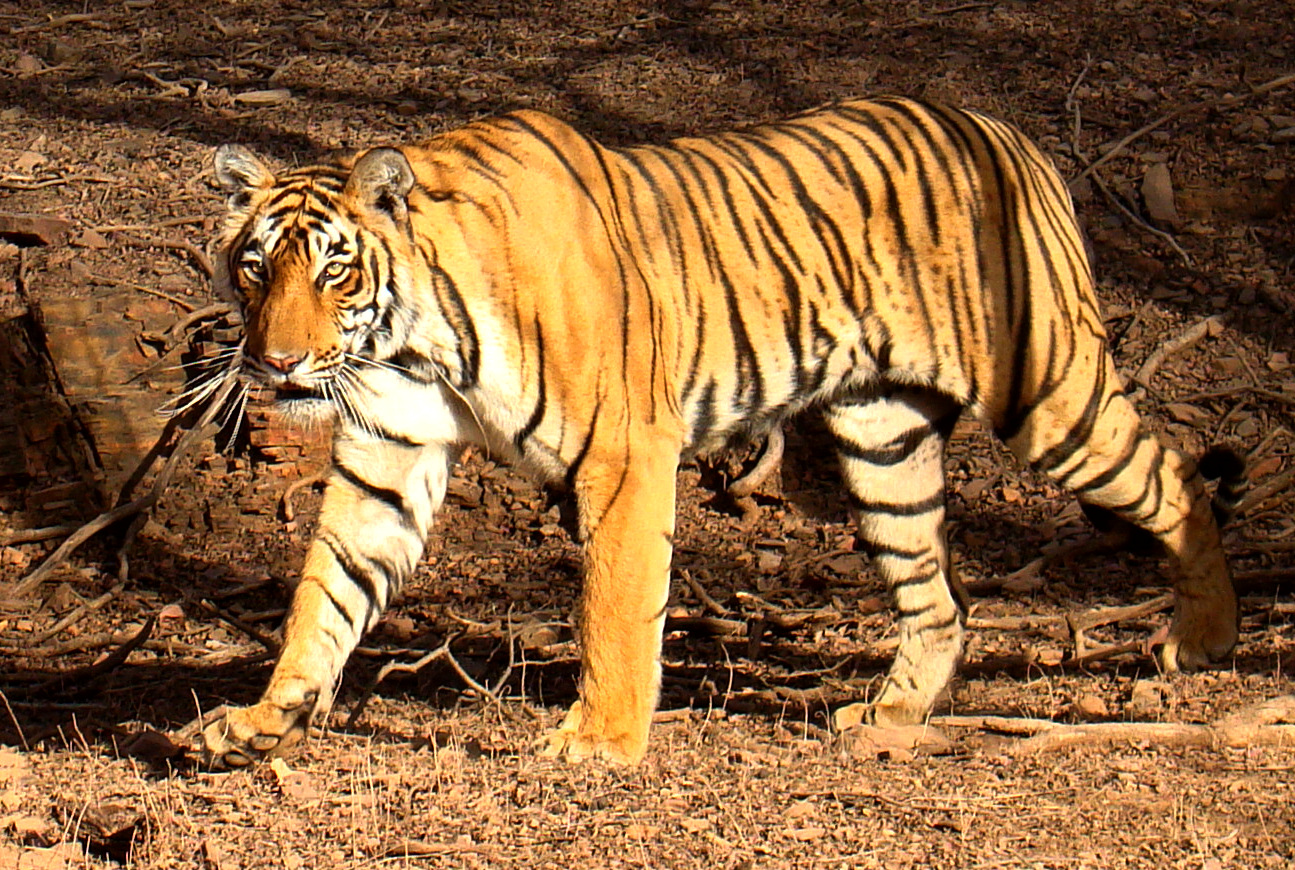 |
| Bengal tiger in Ranthambore National Park |
It is the first time in almost a hundred years that there has been an increase in the global tiger population. The number of wild tigers has risen to 3,890 in April this year from 3,200 in 2010, indicating an almost 22 percent increase. This significant increase has been credited to several factors, including increases in tiger populations of Bhutan, India, Nepal, and Russia, enhanced surveys and improved protection. Out of all the tiger range countries, India alone has recorded a rise of over 500 tigers during a period of six years and continues to be home to the highest number of tigers. According to Marco Lambertini, director general of WWF International, the rise of tiger populations offers a "great hope and shows that we can save species and their habitats when governments, local communities, and conservationists work together." Although the total number of tigers is 3,890, that figure could be more because Myanmar still has to announce its tiger numbers. In 2010, it had just 85 wild tigers. The "Global Wild Tiger Status" report has not included the country's figure in the global figure for this year. The updated minimum figure is accumulated from the International Union for Conservation of Nature (IUCN) data and countries' latest national tiger surveys. Union environment and forests minister Prakash Javadekar indicated that Rs. 380 crores have been allocated to Project Tiger in the current fiscal year, which is an unsurpassed high and shows that the government of India is committed to tiger conservation.
| Latest figures of the global tiger population |
 |
| Tiger in captivity |
It is indeed an amazing news that the global tiger population has increased by 22 percent in six years. However, figures indicate that India shown the highest population of tigers than any other country in Asia. This is especially true for Cambodia, China, Laos, and Vietnam which have the lowest numbers of tigers in the world. The drastic decline in tiger populations of these three countries is attributed to a wide range of factors such as indiscriminate poaching and the illegal wildlife trade, which continue to take toll on populations of wild animals throughout Southeast Asia. It is highly recommended that captive breeding and reintroduction of tigers, most notably Indochinese and South China tigers, should be implemented in these countries followed by improvement in tackling of illegal activities such as poaching and the wildlife trade. The tiger is not only considered a flagship species in India and other Asian countries, but is also considered a keystone species that plays a significant role in maintaining balance in the ecosystem of its native range. Therefore, saving the tiger and making sure that its global population continues to expand across Asia would also result in saving and ensuring the survival of other animals that the tiger shares its habitat with.
View article here